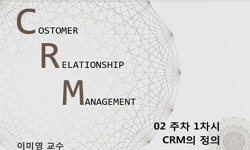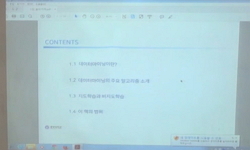Steel bars, used as raw materials for automotive engine and transmission components, require high strength, toughness, and surface quality. Surface defects are particularly dangerous, because they can cause fractures due to stress concentration under ...
http://chineseinput.net/에서 pinyin(병음)방식으로 중국어를 변환할 수 있습니다.
변환된 중국어를 복사하여 사용하시면 됩니다.
- 中文 을 입력하시려면 zhongwen을 입력하시고 space를누르시면됩니다.
- 北京 을 입력하시려면 beijing을 입력하시고 space를 누르시면 됩니다.
https://www.riss.kr/link?id=T17091489
- 저자
-
발행사항
서울 : 성균관대학교 일반대학원, 2024
-
학위논문사항
학위논문(석사) -- 성균관대학교 일반대학원 , 산업공학과 , 2024. 8
-
발행연도
2024
-
작성언어
한국어
- 주제어
-
발행국(도시)
서울
-
기타서명
Data mining-based multi-response optimization in hot rolling process under dynamic manufacturing condition
-
형태사항
46 p. : 삽화(일부천연색), 표 ; 30 cm
-
일반주기명
지도교수: 이동희
참고문헌: p. 43-44 -
UCI식별코드
I804:11040-000000179334
- DOI식별코드
- 소장기관
-
0
상세조회 -
0
다운로드
부가정보
다국어 초록 (Multilingual Abstract)
This study proposes a data mining approach to optimize cross-sectional area and uniformity during rolling, even in a changing production environment. In the first step, we use historical production data and analysis of variance to identify variables that indirectly represent the production environment. We then apply an unsupervised Gaussian mixture model to cluster production data with similar environments. In the second step, shape quality is separated into two response variables: cross-sectional area and uniformity and these are converted into overall preference scores between 0 and 1 using desirability function. After that, we find the optimal process parameters for each cluster that maximize preference scores using the Patient Rule Induction Method. By applying the proposed method to the steel bar rough rolling process, its effectiveness was verified. The products produced within the optimal parameter ranges showed significant improvement, achieving shape quality within the top 63.1% to 99% of all products.
Steel bars, used as raw materials for automotive engine and transmission components, require high strength, toughness, and surface quality. Surface defects are particularly dangerous, because they can cause fractures due to stress concentration under repeated loads while driving, which can lead to accidents. Poor shape control during rolling process is a primary cause of these defects, and the process is challenging to optimize due to the dynamic production environment, where changes over time complicate the rolling process and make it difficult to adjust manually.
This study proposes a data mining approach to optimize cross-sectional area and uniformity during rolling, even in a changing production environment. In the first step, we use historical production data and analysis of variance to identify variables that indirectly represent the production environment. We then apply an unsupervised Gaussian mixture model to cluster production data with similar environments. In the second step, shape quality is separated into two response variables: cross-sectional area and uniformity and these are converted into overall preference scores between 0 and 1 using desirability function. After that, we find the optimal process parameters for each cluster that maximize preference scores using the Patient Rule Induction Method. By applying the proposed method to the steel bar rough rolling process, its effectiveness was verified. The products produced within the optimal parameter ranges showed significant improvement, achieving shape quality within the top 63.1% to 99% of all products.
국문 초록 (Abstract)
본 연구에서는 이러한 문제를 해결하기 위해 데이터 마이닝을 활용하여 동적 생산 환경에서 압연 중 소재의 단면적과 편경차를 최적화할 수 있는 방법을 제안한다. 제안하는 방법의 첫번째 단계는 과거 생산 데이터를 사용하여 분산 분석(Analysis of Variance)을 통해 생산 환경을 간접적으로 나타내는 변수를 선정하고, 비지도학습 가우시안 혼합 모델(Gaussian mixture model)을 사용하여 생산 환경이 유사한 생산 데이터를 군집화 하였다. 두번째로 형상 품질을 2가지 반응변수로 구분하여 호감도 함수를 통해 0에서 1사이의 값을 갖는 호감도 점수로 변환시킨 뒤, 인내심 규칙 추론방법(Patient Rule Induction method)를 활용하여 각 군집 데이터 별 호감도 점수를 최대화하는 공정인자 범위를 탐색했다. 제안된 방법은 봉강 조압연 공정을 대상으로 ‘22~23년 데이터로 공정인자 최적범위를 도출한 뒤 ‘24년 1월부터 2월까지의 생산 데이터로 검증한 결과, 최적범위로 생산된 제품의 품질이 전체 생산재의 품질 상위 63.1%~99.0%로 품질 개선 효과가 높게 나타났다.
봉강은 자동차의 엔진 및 변속기 핵심 부품으로 가공되는 원소재로 높은 강도와 인성, 표면 품질을 요구한다. 특히 표면 흠이 부품에 잔존할 경우 자동차 운행 중 반복 하중이 노치(Notch) 효...
봉강은 자동차의 엔진 및 변속기 핵심 부품으로 가공되는 원소재로 높은 강도와 인성, 표면 품질을 요구한다. 특히 표면 흠이 부품에 잔존할 경우 자동차 운행 중 반복 하중이 노치(Notch) 효과에 의해 흠 부위에 응력이 집중되고, 이후 파단 기점으로 작용하여 사고를 초래할 수 있으므로 엄격히 관리되어야 한다. 표면 흠의 주요 발생 원인 중 하나는 압연 중 소재 형상 관리 미흡으로, 이를 해결하기 위한 공정 최적화가 필요하지만 시간에 따라 생산 환경이 변화되어 최적화에 어려움이 있다.
본 연구에서는 이러한 문제를 해결하기 위해 데이터 마이닝을 활용하여 동적 생산 환경에서 압연 중 소재의 단면적과 편경차를 최적화할 수 있는 방법을 제안한다. 제안하는 방법의 첫번째 단계는 과거 생산 데이터를 사용하여 분산 분석(Analysis of Variance)을 통해 생산 환경을 간접적으로 나타내는 변수를 선정하고, 비지도학습 가우시안 혼합 모델(Gaussian mixture model)을 사용하여 생산 환경이 유사한 생산 데이터를 군집화 하였다. 두번째로 형상 품질을 2가지 반응변수로 구분하여 호감도 함수를 통해 0에서 1사이의 값을 갖는 호감도 점수로 변환시킨 뒤, 인내심 규칙 추론방법(Patient Rule Induction method)를 활용하여 각 군집 데이터 별 호감도 점수를 최대화하는 공정인자 범위를 탐색했다. 제안된 방법은 봉강 조압연 공정을 대상으로 ‘22~23년 데이터로 공정인자 최적범위를 도출한 뒤 ‘24년 1월부터 2월까지의 생산 데이터로 검증한 결과, 최적범위로 생산된 제품의 품질이 전체 생산재의 품질 상위 63.1%~99.0%로 품질 개선 효과가 높게 나타났다.
목차 (Table of Contents)
- 제1장 서론 1
- 1.1 연구 배경 1
- 1.2 연구 동향 3
- 1.3 기존 연구의 한계점 및 연구 목표 4
- 1.4 논문의 구성 5
- 제1장 서론 1
- 1.1 연구 배경 1
- 1.2 연구 동향 3
- 1.3 기존 연구의 한계점 및 연구 목표 4
- 1.4 논문의 구성 5
- 제2장 이론적 배경 6
- 2.1 압연 공정 개요 6
- 2.2 공정 최적화 방법 8
- 2.2.1 실험계획법을 활용한 공정 최적화 9
- 2.2.2 유한요소해석을 활용한 공정 최적화 11
- 2.2.3 데이터 마이닝을 활용한 공정 최적화 13
- 제3장 제안 방법 15
- 3.1 생산 환경 유사성 분석 16
- 3.1.1 분산 분석을 통한 변수 생성 16
- 3.1.2 군집 분석 18
- 3.2 공정인자 최적범위 탐색 21
- 3.2.1 호감도 함수 활용 다중 반응변수 합성 21
- 3.2.2 공정인자 최적범위 탐색 22
- 제4장 적용 결과 26
- 4.1 봉강 조압연 공정 생산 환경 유사성 분석 결과 27
- 4.1.1 연속생산 그룹별 데이터 분산 분석 결과 27
- 4.1.2 군집 분석 결과 28
- 4.2 봉강 조압연 공정인자 최적범위 도출 결과 32
- 4.2.1 조압연 형상 품질(단면적, 편경차) 합성 결과 32
- 4.2.2 공정인자 최적범위 탐색 결과 34
- 4.3 품질 개선 효과 검증 결과 38
- 제5장 결론 및 향후계획 40
- 5.1 연구 결론 40
- 5.2 향후 계획 42












